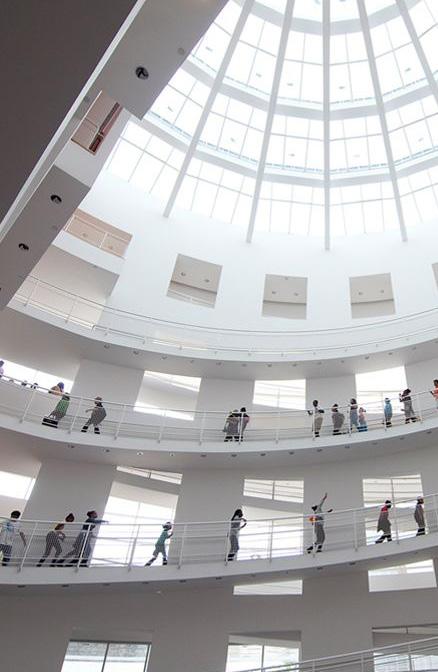
1 minute read
24. Light and Shadow
Light and Shadow
Light and its interconnected cousin shadow are fundamental elements in architecture. How space is illuminated and what is chosen to be kept in darkness is tied to the building’s purpose and context. My continuous plane study showcases the different shapes of shadows that planes can create when a light source is angled in specific ways. Here I chose to exaggerate the forms of the model but not overexaggerate them. Light also illuminates spaces, and this can affect the mood and function of space. Shadow can be used to create dramatic shapes on walls, floors, and other surfaces. The forms created by light and shadow due to the light wells in Simmons Hall at MIT create a sense of contemplation and etherealness in an otherwise unremarkable residence hall. The shapes created by light and shadow can also be symbolic to the building’s function or context. The open cross-shaped part of the wall in Tadao Ando’s Church of the Light creates a connection with the symbolic cross shape associated with the Christian faith. The atrium’s massive skylight at Atlanta’s High Museum emphasizes the high ideals often thought to be represented in art through an ethereal, heavenly light. Light, and the shapes it creates, is pivotal in the understanding of architectural design.
Advertisement
Clockwise from the top right:
Light Wells inside SImmons Hall at MIT. Designed by Steven Holl Architects Photo from Steven Holl Architects.
My study of continuous planes with shadows steming from a single light source.
Atrium of Atlant’s High Museum of Art. Designed by Richard Meier and Partners Photo by Jeoff Davis.
Tadao Ando’s Church of the Light. Photo by Bergmann.
Light Wells inside SImmons Hall at MIT. Designed by Steven Holl Architects Photo from

My study of continuous planes with shadows steming from a single light source.
Atrium of Atlant’s High Museum of Art. Designed












